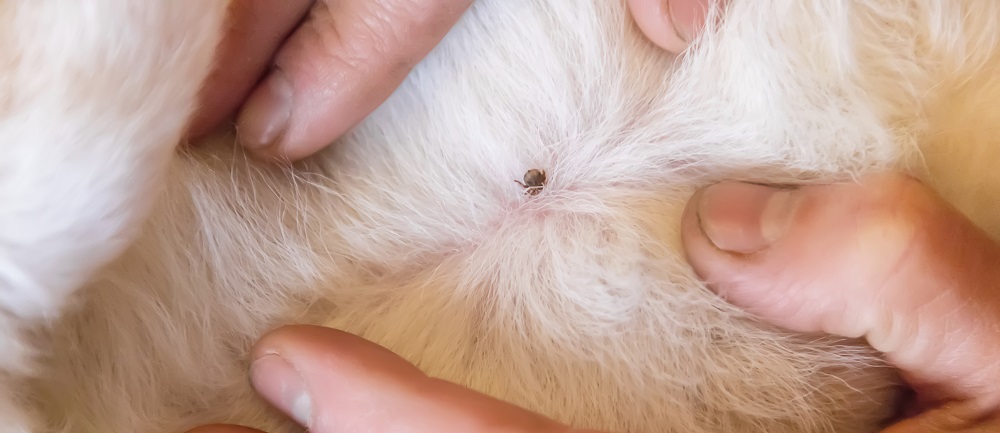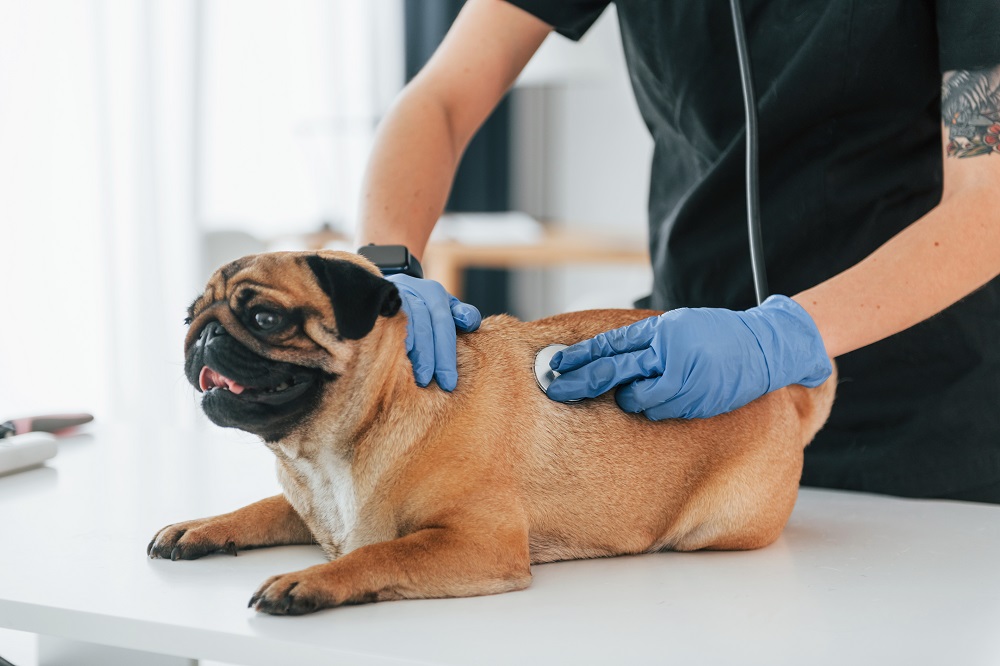Can ticks make dogs sick? Check out these silent signs of ticks in dogs and take care of your pooch.
Dealing with ticks has always given me shivers down my spine, especially because I have three super sociable dogs. Whenever I go out with them, I have to be careful, especially during the warm season. Why am I so afraid of ticks? Well, let’s see. First of all, dogs who catch tick-borne illnesses may experience various symptoms as well as long-term consequences.
Knowing the primary disease that ticks can cause and how to reduce your four-legged friend’s chance of getting them is essential if your dog enjoys the outdoors as much as mine does. Lyme disease is one of the most common tick diseases, followed by anaplasmosis, Bartonella, and Ehrlichia. I keep these conditions in mind even if I don’t immediately find a tick on my pup, as the symptoms of these illnesses may not always appear immediately after infection.
Do you know how to recognize ticks on your dog? After reading the following lines, you will be able to understand all the silent signs of ticks in dogs and schedule a trip to the vet ASAP. Let’s start!

Swelling
One of the first signs of ticks in dogs is a slight swelling close to the tick bite site. Look closely to see if there are any ticks buried in the affected area of their body. Due to their small size, ticks are frequently overlooked at first, especially before they bite.
Although ticks are usually firm and may have small legs visible near the base, they can resemble tiny skin tags or moles. They vary in size from a sesame seed to a raisin, based on how long they’ve been eating.
Even if it’s not a tick, a small bump could signal a serious health problem that requires immediate attention. See a veterinarian right away if you believe your dog’s swelling is the result of an allergic reaction because they could be in danger of anaphylaxis.
Itching and scratching all the time
Is your dog scratching more than usual, even though you just took it to the vet for the annual vaccine? These symptoms could be a silent sign of ticks on your dog. As soon as a dog feels itchy, it’s likely that they have ticks. This is especially true if your dog has been outside a lot recently and is scratching one part of their body more than others. A tick may be stuck there and biting them.
Don’t let your dog scratch the tick until you can get rid of it. If they scratch too hard, the tick’s head might break off and stay in the skin, which can make them more likely to get sick and cause an infection. By lightly stroking your dog’s coat and feeling for tiny lumps, you can detect ticks before they become more serious problems.
If a tick can be easily removed by you, in case it gets stuck, you should go to the vet as soon as possible.
Chewing and licking the hurt area
Dogs that have ticks embedded in their skin are more likely to chew and lick the affected area frequently. If your dog chews and licks one spot on their body more than any other, that’s a good sign that a tick might be hiding there.
Look for signs of a tick in the area and places nearby. If you see a tick, try to keep your dog from biting or licking it until you can get rid of it properly or you go to the vet. If they don’t, they might break off the head in the skin.
Red skin
Among the signs of ticks in dogs, one of the most obvious is redness and swollen skin. If your pooch is super fluffy, it might be a little tricky to see this; however, I recommend petting it gently to see if it’s bothered by your touch.
Since ticks bite into the dog’s skin and stay attached to it for hours or even days if not discovered earlier, it is causing a rash on the skin. And some dogs may be allergic to ticks’ saliva, which can make the redness even more visible.
Occasionally, the area may get infected and produce fluid or a bad smell. Sometimes these reactions happen on parts of the body with less fur, like the ears, under the legs, or around the groin.

Signs of physical pain or discomfort
Ticks are more likely to hurt and bother your dog if they stay on their body for a long time. In addition, any tick that buries itself in a sensitive area of your dog’s body, like the groin, may cause pain right away.
If you don’t know why your dog is in pain, look for buried ticks. This is especially important if they have been outside a lot lately. Make sure you carefully look over any parts of their body that seem more sensitive.
Exhaustion
Is your pooch an active one, but suddenly it became tired or, worse, weak? As previously mentioned, ticks are disease carriers, and if your dog has one by chance, it can cause lethargy or general exhaustion.
If there is no obvious reason, such as heat or recent intense activity, fatigue may indicate a tick-borne illness. Fatigue is frequently one of the first indicators that something is off. This symptom could come with a loss of appetite or changes in behavior, like hiding or avoiding contact. Even if you haven’t seen a tick, one may have been on the animal and now be off.
Loss of appetite
If you have reached so far with the reading, you probably understood the fact that ticks don’t affect only the skin of our furry friends but also mess up their entire body and the digestive system as well. If your dog was a muncher and every time you opened a bag of chips it was on top of you trying to steal one and now is just sitting in a corner, bummed out and sad without even touching its food, then it’s a sign there is something wrong with it.
Other symptoms like fever, vomiting, or lethargy can occur alongside these. It’s important to notice if your dog is still eating but not maintaining their normal weight. Tick-borne diseases can hurt the immune system, liver, and kidneys, which can make it difficult to absorb nutrients or use energy.
Bottom line:
Always be careful while outdoors! Of course, ticks won’t make you give up your time in nature; you just need to exercise extra caution and remain vigilant about the risks. Now that you know how to keep your dog safe and avoid getting diseases from ticks, you can both spend more time outside.
The best way to keep your four-legged friend free of ticks, fleas, or any other unwanted critters I recommend you use the Allyeah Natural Flea & Tick Collar. Why do I recommend it? First of all, I tested it on my dogs, and the results were wonderful. Secondly, it’s made of natural materials, it’s resistant, and the best thing is that the dogs don’t find it uncomfortable. Trust me, you will have much more peace of mind after buying it.
If you decide to give it a try, it can be found on Amazon for $27.99. (Keep in mind that the price may change; this was the price when I wrote the article!)
…psst! Are you a dog owner who’s curious to find out more about your dog’s behavior? Check out this article: 13 Surprising Things Your Dog Is Afraid Of, According to Pet Experts.












